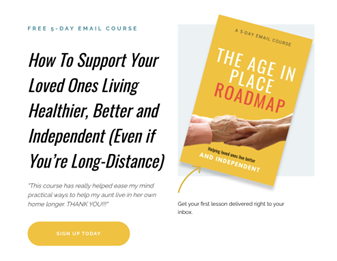How To Complete A Needs Assessment For Aging Parents – and Why It Matters.

Imagine a full check-up, but for your loved one’s entire lifestyle. That’s exactly what a Needs Assessment for aging in place is all about. It’s like a roadmap to independent living by figuring out what kind of support they need to keep them safe, healthy, social, and independent, right in their cozy homes for as long as they wish.
You can go with a professional doing the assessment, or do it yourself with a systematic approach.
Either way, the goal is the same – to spot any hiccups before they become problems and design a plan that keeps them happy, healthy, and safe.
It’s probably somewhat self-explanatory why we recommend this as a starting point, but let’s look at the biggest advantages of going this route:
1.Identifying Safety Issues
Starting the journey to a secure and comfy aging-in-place experience begins with pinpointing any safety issues. An in-depth assessment could help spot anything from immediate physical safety concerns to broader issues impacting the general well-being of your loved ones.
It could point out the need for little tweaks, like updating the emergency contact list, scheduling an overdue doctor’s appointment, or even adding better lighting to avoid trip hazards around the home.
2.Uncovering Unseen Needs
Sometimes, we miss the little signs that signal our loved ones might be struggling. A needs assessment can guide you to ask questions that might not crop up in your everyday chat.
You might find out, for instance, that your loved one is having a hard time tying their shoelaces, and that’s why they’ve been skipping their usual walks.
3.Organizing the Support They Need
Everyone needs different types and levels of support. This is where a Needs Assessment comes into its own. By sorting out the needs identified, we can ensure our loved ones get the right kind of help.
For instance, a person with major health problems may need more medical attention, while someone else might just need more face-to-face chats and social activities.
4.Giving You a Glimpse Into the Future
A Needs Assessment doesn’t just deal with what’s happening right now, it also gives you a heads-up on what might be down the road. Whether it’s planning for a health condition that might worsen over time or tackling the effects of feeling lonely, this assessment sets you up to act ahead of time.
Another way to think about this is that having a clear vision of what’s to come can smooth the path when big changes have to be made.
The more time everyone has to adjust, the less stressful and more cost-effective it can be.
5.Getting Everyone Onboard With The Support Plan
The biggest benefit of a well-organized support plan is that it ensures everything runs like clockwork, and your loved ones get the help they need when they need it – no mix-ups or gaps.
A lot of us put off completing a Needs Assessment until things get really tough.
It’s never too soon to get started. Even at the early stages of aging in place, a well-coordinated support plan can not only strengthen our bonds but also reduce stress we didn’t even realize existed.
To see an example of a comprehensive Needs Assessment, we’ve created a FREE 5-Day Email Course – The Age In Place Roadmap that includes a Needs Assessment and lots more resources.
3 Common Mistakes To Avoid
When supporting our loved ones, being patient and honing our conversation skills will go a long way to helping them thrive. Here are some of the most common mistakes we see people make when trying to complete a needs assessment as if it was just a checklist:
1. Overlooking the Loved One’s Preferences and Desires:
- Disregarding Personal Space: You might be tempted to rearrange their home for easier mobility without consulting them. This could lead to feelings of discomfort and intrusion. Instead, discuss potential changes with them first, ensuring that any adjustments respect their personal space and preferences.
- Making Their Decisions: You may feel that a certain medical procedure or treatment is best for your loved one based on your research. However, it’s crucial to involve them in these decisions. Understand their concerns, answer their questions, and consider their comfort and wishes before making any health-related decisions.
2. Rushing the Assessment:
- Overloading with Questions: Bombarding your loved one with too many questions at once can be overwhelming and stressful.
- Missing Important Things: A rushed walk-through of the home might miss potential safety hazards.
3. Not Considering Future Needs:
- Ignoring Progressive Nature of Aging: You may set up their home to fit their current capabilities, ignoring the fact that their mobility could decrease over time. Instead, plan for future scenarios, like installing grab bars in the bathroom even if they are not necessary yet.
- Short-term Thinking: You might create a care plan that suits their needs now but lacks flexibility for future changes. Instead, create a dynamic care plan that can be modified as their needs evolve, such as potentially including in-home care services down the line, even if they’re not required at the moment.



